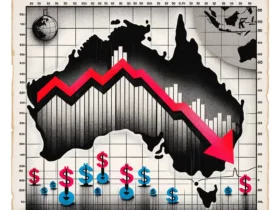The first bagged packaged goods were invented in the 1950s. It was a revolutionary idea that took away the need for people to buy items one by one, and also made it easy for people to have a variety of items at home without cluttering their pantry.
These days, there are no more bagged packaged goods at grocery stores, but there are still some companies who sell them online. They are sold by weight instead of by number of items so they will cost more than single-item packages
Bagged packaged are convenient to carry for consumers. It is easy to store, can be delivered to specific locations, and doesn’t require refrigeration. This form of retailing is common in convenience stores and supermarkets.
The article talks about how bagged packaged goods have become a new norm in the retail industry, and how it has been adopted by different retailers for different reasons.
The use of bagged packaged goods is widespread. These types of products are usually used for the storing and transportation of various items.
The use of these bagged packaged goods has been around for a long time, with the earliest examples being seen in the 1800s. The use of these packaging containers has been popularized by their convenience, durability, and sturdiness.
Packaged goods that are bagged have a variety of purposes. They can be used to protect the contents from breaking by increasing the weight. Packaged goods are usually made with materials that are easy to fold, seal, and store for later use. This packaging is also reusable by being able to be folded back up after use.
Some packaged goods are meant for single-time use or are small enough for you to consume them all in one sitting. These packaged goods may come in a box, jar, bottle, or another container.
The most common types of packaged goods include food items like cereals, chips, cookies and candies; drinks including coffee beans and tea leaves; personal care products like shampoo and conditioner; household cleaners like soap and dishwasher detergent; pet food items like
Bagged packaged goods are an easy and convenient way to store food. They enable consumers to buy large quantities of food without having to worry about bulk items taking up too much space in the fridge.
Bagged packaged come in many sizes and shapes, some with openings on the top and others with opening at the bottom for pouring out the contents. Some bagged products have a date printed on them while others do not. If there is no date on it, it is recommended that you use up your product within six months of purchase.
The word “bagged” is often used to refer to products that are boxed and packaged. Bagged packaged goods can be food items like cereal or chips, or non-food items such as paper towels.
Bagged packaged goods usually come with a bag inside the box. The bag is usually made of plastic and is sealed at the top with a zipper.
With the increased demand for convenience and accessibility, the demand for bagged packaged goods has also increased.
There are many benefits of purchasing bagged packaged goods such as they are convenient to take on trips, they are easy to transport, and they can be bought in bulk at a lower price. The disadvantages of buying them include higher costs per unit weight or volume, food waste from leftovers going bad before being eaten, and loss of product freshness.
It also incorporates a number of non-food items such as beauty items, over-the-counter medication, and other consumable goods.
Bagged packaging is one of the fastest-growing areas in the grocery industry. Sales of bagged packaged goods grew by more than five percent from 2010 to 2015.
The trends in this sector have been shaped by a number of factors that have led to some significant changes in the last few years. For example, more and more people are buying these products because they find it convenient and easy to use while shopping for groceries.
Bagged packaged goods (BPBs) are products which are sold in bags or boxes and require no preparation before consumption. BPBs can be considered as convenience food because they come in easy-to-open packages, do not require cooking, and often contain preservatives that extend shelf life.
The global bagged packaged foods market size was valued at USD 479 billion in 2016. It is forecasted to grow at a CAGR of 3% during the forecast period of 2017-2021 owing to increased demand for ready-to-eat food products in developing economies such as India and China.
The first bagged packaged goods were invented in the 1950s. It was a revolutionary idea that took away the need for people to buy items one by one, and also made it easy for people to have a variety of items at home without cluttering their pantry.
These days, there are no more bagged packaged goods at grocery stores, but there are still some companies who sell them online. They are sold by weight instead of by number of items so they will cost more than single-item packages
Bagged packaged are convenient to carry for consumers. It is easy to store, can be delivered to specific locations, and doesn’t require refrigeration. This form of retailing is common in convenience stores and supermarkets.
The article talks about how bagged packaged have become a new norm in the retail industry, and how it has been adopted by different retailers for different reasons.
The use of bagged packaged goods is widespread. These types of products are usually used for the storing and transportation of various items.
The use of these bagged packaged has been around for a long time, with the earliest examples being seen in the 1800s. The use of these packaging containers has been popularized by their convenience, durability, and sturdiness.
Packaged goods that are bagged have a variety of purposes. They can be used to protect the contents from breaking by increasing the weight. Packaged goods are usually made with materials that are easy to fold, seal, and store for later use. This packaging is also reusable by being able to be folded back up after use.
Some packaged goods are meant for single-time use or are small enough for you to consume them all in one sitting. These packaged goods may come in a box, jar, bottle, or another container.
Bagged packaged goods are convenience products that come in large, resealable packages. They are mass-produced to save time and money for consumers.
The global bagged packaged foods market









